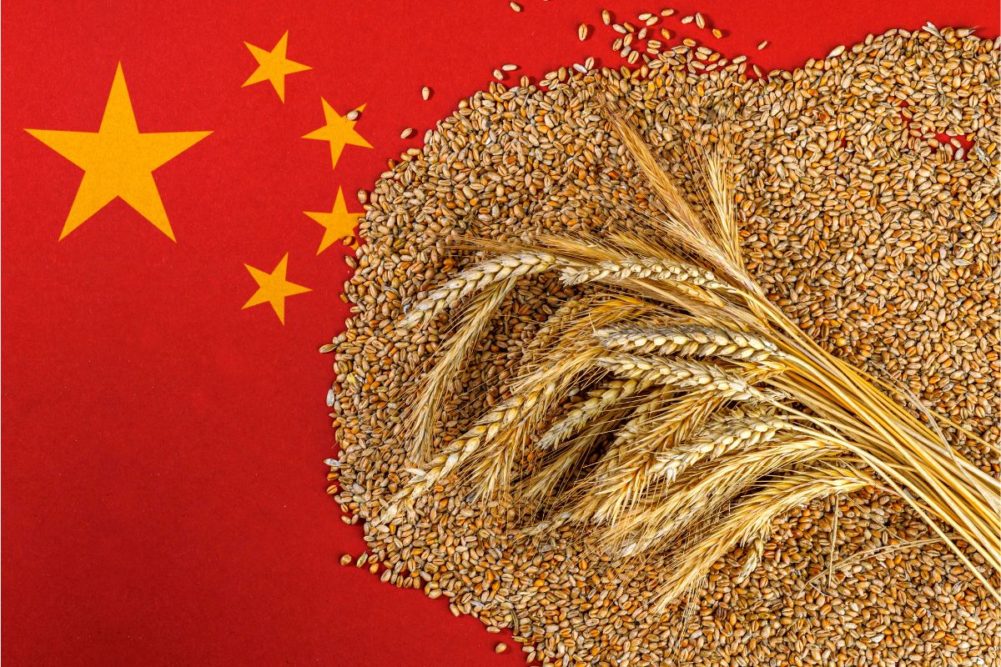.png)
Image credit: World Grain
This is the 160th installment of the China Chronicles series.
Availability of and access to safe food is key to achieving food security and good health. Food safety is “the handling, preparation and storage of food in ways that minimize the risk of food-borne illness”.
Eating unsafe food causes approximately 600 million illnesses (1 in 10 people) and 420,000 deaths. In addition, it causes 33 million years of healthy life lost in low- and middle-income countries, and costs US$110 billion per year in healthcare. Approximately 40% of children under the age of 5 are affected by foodborne diseases. Consumption of unsafe food puts a strain on healthcare systems, causes economic losses, and impedes socio-economic development.
The 75th World Health Assembly adopted an updated Global Food Safety Strategy (2022-2030) to strengthen food safety systems. This follows the WHA73.5 resolution on “Strengthening Food Safety”, which urges member states to review their existing food safety strategies in light of new challenges. In terms of food safety, the “One Health” approach (see diagram below) is key, which integrates the balance between humans, animals and ecosystems to prevent foodborne illnesses.
One Health Approach
China is the world's second most populous country and accounts for 23% of the world's food grain production. It is the world's largest producer of agri-food products, by volume, at 1,095 million tonnes. Moreover, it is the world's second largest importer of agricultural products by value and a major exporter. Globally, China is a major player in wheat and rice production, and is also among the top producers of corn, barley, and oilseeds. Food safety is a major concern in China due to high rates of agricultural production and food contamination. Producers have been known to contaminate food with adulteration, additives, and pesticides in order to increase profits.
The Chinese government has been strengthening food safety regulations for many years and established the China National Food and Drug Administration in 2003. In 2015, the China Food Safety Law was enacted to ensure the food safety, health and life of the people. Furthermore, in 2017, China issued the “National Food Safety Standards Work Plan” for the revision of food standards under the National Health and Family Planning Commission. These regulations concern food and special diets, and also standardize food production and operation practices. China's national strategy for food safety was established in 2016 with a clear goal and roadmap of zero tolerance for food safety risks by 2020, and the goal of ensuring that Chinese citizens can “eat safely and with peace of mind”. Furthermore, it aims to establish food safety standards and governance by 2050.
China has had a number of food safety incidents. In 1988, eating raw clams led to an outbreak of Hepatitis A in Shanghai, in which many people became infected and were hospitalized. China also had a milk scandal in 2008, in which infant formula and other foods were contaminated with melamine, causing 300,000 children to suffer from kidney and urinary tract infections. This prompted the establishment of a new Food Safety Law of the People's Republic of China, whose Article 19 states that “Food safety standards are mandatory standards. Compulsory standards other than food safety standards shall not be established for food.” Despite this, there have been multiple food safety scandals over the past two decades, the most recent being the unsafe conditions at the Wuhan animal market that spread the COVID-19 pandemic.
The reason why food-related accidents are so common is still due to the lack of government oversight and regulation, and the lack of ethics among food companies who pursue profits (Figure 2). Environmental issues also affect crop yields, food quality, and food safety. Approximately 12 million tons of food grains are contaminated by soil pollution with heavy metals every year, threatening food safety and human health.
Reasons for China's food safety scandal
The proliferation of counterfeit products sold on online platforms has put food safety at risk. Lack of or incomplete labeling of food can also put food safety at risk as consumers are unsure about the food. China has enacted the “Pre-packaged Food Labeling Standard” since 2011 and has revised it over the years. Food scandals have shown that strict regulations and proper implementation of labeling laws are necessary.
It also needs to develop a roadmap for the implementation of the updated Global Strategy for Food Safety (2022-2030) to strengthen China's food safety system and concerns. The future food safety strategy should focus on strengthening food safety laws and aligning food safety standards with international benchmarks. Front-of-pack labeling should be improved to raise consumer awareness and provide them with all the necessary information. In addition, food safety guidelines should be developed to help food producers, enterprises and authorities maintain food safety standards throughout the food value chain.
Shobha Suri is a senior research fellow at the Observer Research Foundation.
The views expressed above are those of the author. ORF Research and Analysis is now available on Telegram. Click here to access curated content including blogs, long-form articles and interviews.
Source link



